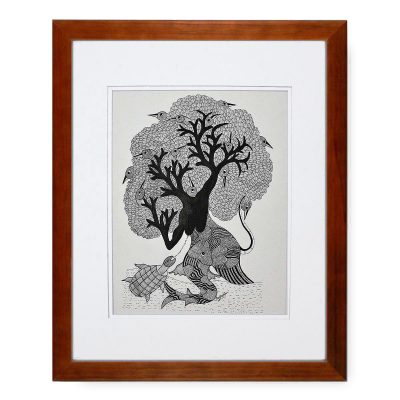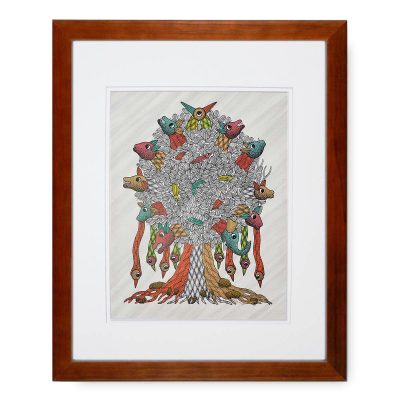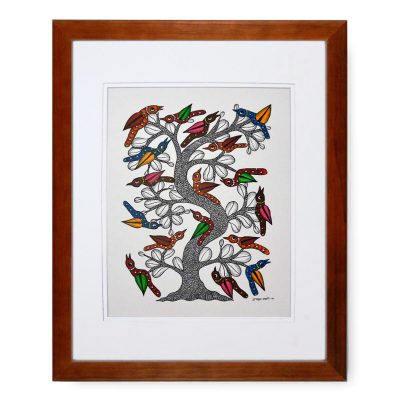Gond Tribal Art
Click to Learn About Gond Tribal Art
Gond tribal art of central India, is another artistic exploration of our shared reverence and connection to the spirit of animals and nature. Collectors who enjoy Oaxacan wood carvings Huichol art or folk art in general should feel right at home with these offerings. There is even an indirect connection to Mexico, as the great Mexican poet Octavio Paz was a friend and influence in the life of famed Indian artist, J. Swaminathan, who brought a contemporary focus to Indian tribal art and promoted it in the global art world.
Modern Gond tribal art, also referred to as Jangarh Kalam paintings are an extension of the animist Gond culture of central India. J. Swaminathan encountered a talented seventeen-year-old Jangarh Singh Shyam around 1979 decorating the floors and walls of huts of Patangarh (a village) in the state Madhya Pradesh with traditional Gond ceremonial imagery. Jangarh adapted this art to paper and this lead to a meteoric rise to fame marked by acclaimed exhibitions in Paris and Tokyo. This rise came at a critical time for the Gond as cultural identity was quickly being lost as members left homelands seeking work. Unfortunately, Jangarh’s life ended with a tragic suicide in 2001 but his artistic legacy continues as the art was shared with family and others. Now multiple generations of artists are taking the art to new levels interpreting traditional Gond art in their own unique ways.
Again showing the similarities of humans and other cultural art movements, Gond art is modern but rooted in the ancient past. Traditional Gond art was an offering in the worship of nature, and also a mode of seeking protection and warding off evil. The Gond believed a good image would bring good luck. Today’s imagery with brilliant coloring, complex drawings using dots and lines, and rich textures provide visual narratives of Gond cultural songs and rituals passed down over thousands of years. Some of the imagery is even based on tribal tattoos. Animals play an import part in theses depictions often featuring intertwined tigers, deer, snakes, cattle and birds merging with contorting trees. Trees represent the very cosmos with many Gond deities represented as trees in stories and rituals. Like most art, you never know the true intent of the imagery and storytelling behind a piece, allowing individuals to create their own interpretations and connections to the art.
Showing all 6 results
-
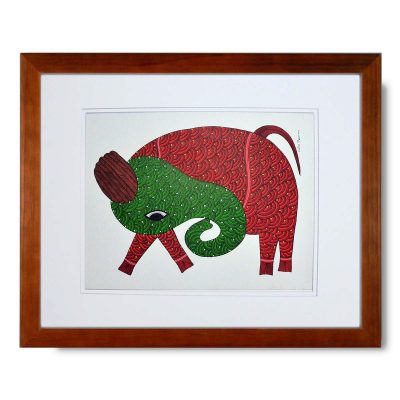
Manoj Tekam: Elephant – In Stock
Size: 10.5 × 14 in (L x W x H)
-
Sold Out
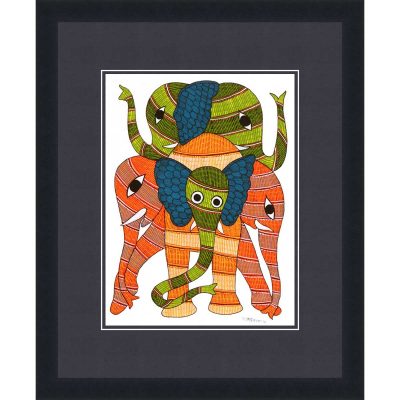
Rajendra Shyam: Elephant Family
Size: 10.5 × 14 in (L x W x H)
-
Sold Out
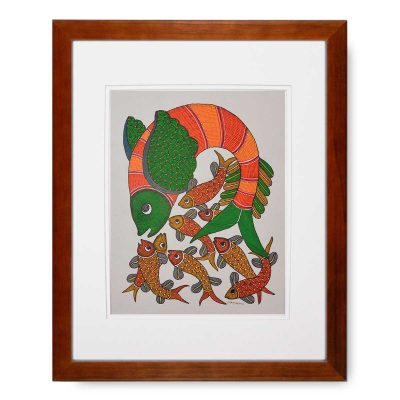
Rajendra Shyam: Shoal of Fish – In Stock
Size: 10.5 × 14 in (L x W x H)
-
Sold Out
Mansingh Vaym: Nature – In Stock
Size: 10.75 × 14 in (L x W x H)
-
Sold Out
Santosh Maravi: Tree of Life
Size: 10.5 × 14 in (L x W x H)
-
Sold Out
Dwarka Paraste: Bird Tree
Size: 11 × 14 in (L x W x H)

